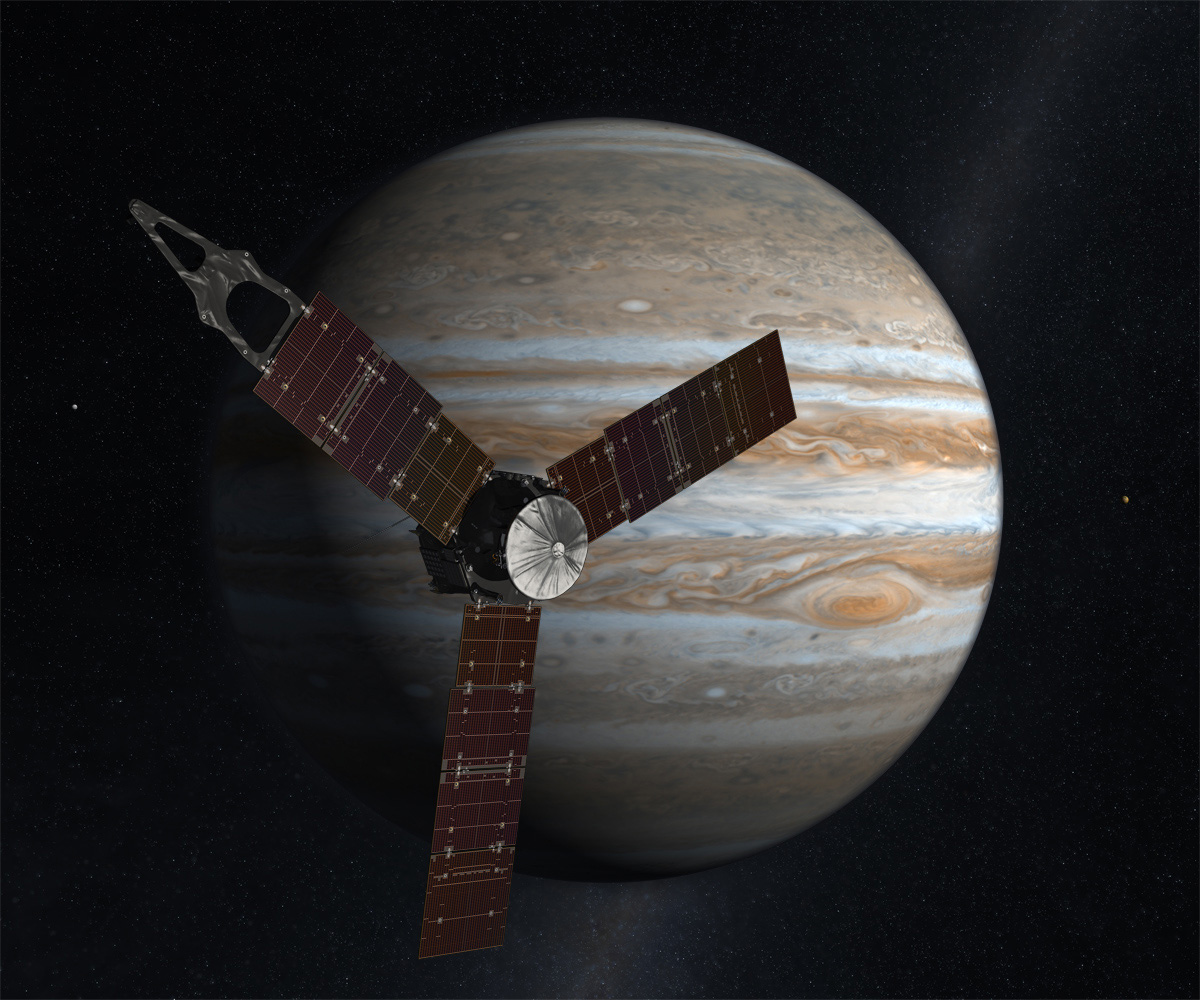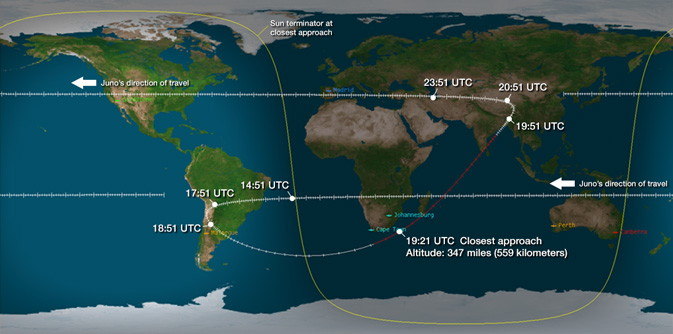
A NASA spacecraft bound for Jupiter zoomed by Earth today (Oct. 9), picking up some much-needed speed for the long and looping trip to the solar system's largest planet.
NASA's Juno spacecraft came within 347 miles (558 kilometers) of Earth during its closest approach, which occurred at 3:21 p.m. EDT (1921 GMT) today over South Africa. The probe was expected to photograph Earth and the moon during the flyby, mission team members said.
The online Slooh Space Camera will track Juno's departure into deep space during a live webcast tonight, beginning at 9:30 p.m. EDT (0130 GMT). You can watch the Juno flyby webcast live on SPACE.com, courtesy of Slooh. [See photos of NASA's Juno mission to Jupiter]
The $1.1 billion Juno mission launched in August 2011 aboard an Atlas 5 rocket, which was not powerful enough to send the 8,000-pound (3,267 kilograms) probe all the way to Jupiter. So mission team members devised today’s Earth flyby to pick up the slack.
"Even a large rocket couldn't provide enough propulsion to get us all the way to Jupiter, so we are flying by the Earth for a gravity-assist that will provide about 70 percent of the initial boost provided by the Atlas V 551 rocket," Juno principal investigator Scott Bolton, of the Southwest Research Institute in San Antonio, said in a statement. "The gravity assist essentially provides as much propulsion as second rocket launch."
The Earth flyby should boost Juno's speed relative to the sun from 78,000 mph (126,000 km/h) to about 87,000 mph (140,000 km/h), mission officials said.

Today's maneuver also allows mission team members to check and calibrate Juno's science instruments and do some other work.
Get the Space.com Newsletter
Breaking space news, the latest updates on rocket launches, skywatching events and more!
"Juno is approaching the Earth from deep space, from the sunlit side," Bolton said. "Juno will take never-before-seen images of the Earth-moon system, giving us a chance to see what we look like from Mars or Jupiter. We plan to release a movie of this unique perspective of the Earth-moon system shortly after the flyby."

Juno is scheduled to reach the Jovian system in July 2016, when it will be captured into a polar orbit around the huge planet. The probe will then study Jupiter’s atmosphere, gravitational field and magnetic field using its nine science instruments over the course of at least one Earth year.
Researchers hope Juno's observations reveal insights about Jupiter’s origin, structure and composition, including whether or not the gas giant possesses a solid core.
Juno will be the first solar-powered spacecraft ever to visit the outer solar system. The probe is equipped with three solar panels, each of which is roughly the size of a tractor-trailer (30 feet long by 9 feet wide, or 9 by 2.7 meters).
Follow Mike Wall on Twitter @michaeldwall and Google+. Follow us @Spacedotcom, Facebook or Google+. Originally published on SPACE.com.
Join our Space Forums to keep talking space on the latest missions, night sky and more! And if you have a news tip, correction or comment, let us know at: community@space.com.

Michael Wall is a Senior Space Writer with Space.com and joined the team in 2010. He primarily covers exoplanets, spaceflight and military space, but has been known to dabble in the space art beat. His book about the search for alien life, "Out There," was published on Nov. 13, 2018. Before becoming a science writer, Michael worked as a herpetologist and wildlife biologist. He has a Ph.D. in evolutionary biology from the University of Sydney, Australia, a bachelor's degree from the University of Arizona, and a graduate certificate in science writing from the University of California, Santa Cruz. To find out what his latest project is, you can follow Michael on Twitter.









